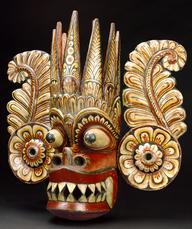





Presentation case containing reproductions of the tools used in the acupuncture method of insertion known as Hammer Needling, or Dashino, developed by Isai Mizono, consisting of a small wooden hammer and a 22ct gold 'Dream Splitting' needle, from the surgery of a British practitioner c.1996. handmade by Kanbe Genzo, Japanese, 1980-1985.
'Dashino' or Hammer Needling is an acupuncture technique. Within this presentation case is the small wooden hammer and a 22 carat gold ‘dream splitting’ needle. In Traditional Chinese Medicine (TCM), acupuncture needles are applied to certain points on the skin. This unblocks the flow through the body of a life force known as qi (chi). TCM practitioners believe qi is essential to wellbeing. However, the hammer needling technique is less concerned with the overall body. Needle insertion tends to concentrate on the abdomen. The small wooden hammer taps the needle into the body. Only shallow insertions are made and the needle is quickly removed.
Details
- Category:
- Asian Medicine
- Object Number:
- 2002-438
- Measurements:
-
overall: 20 mm x 150 mm x 65 mm, .08kg
- type:
- acupuncture needle
- credit:
- Kelley, R.




